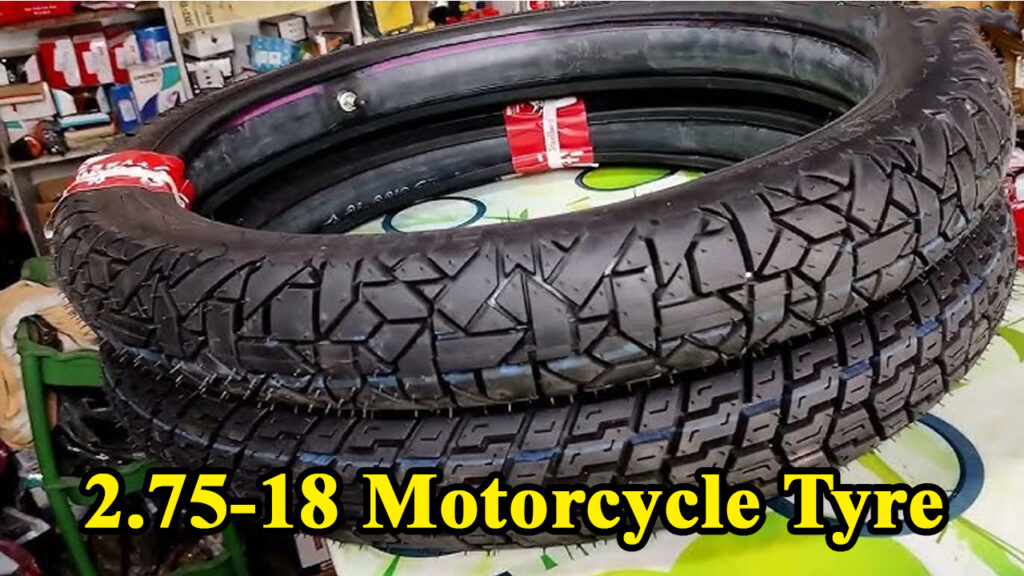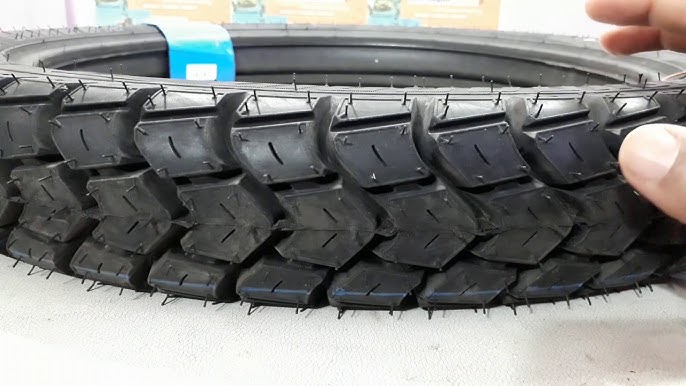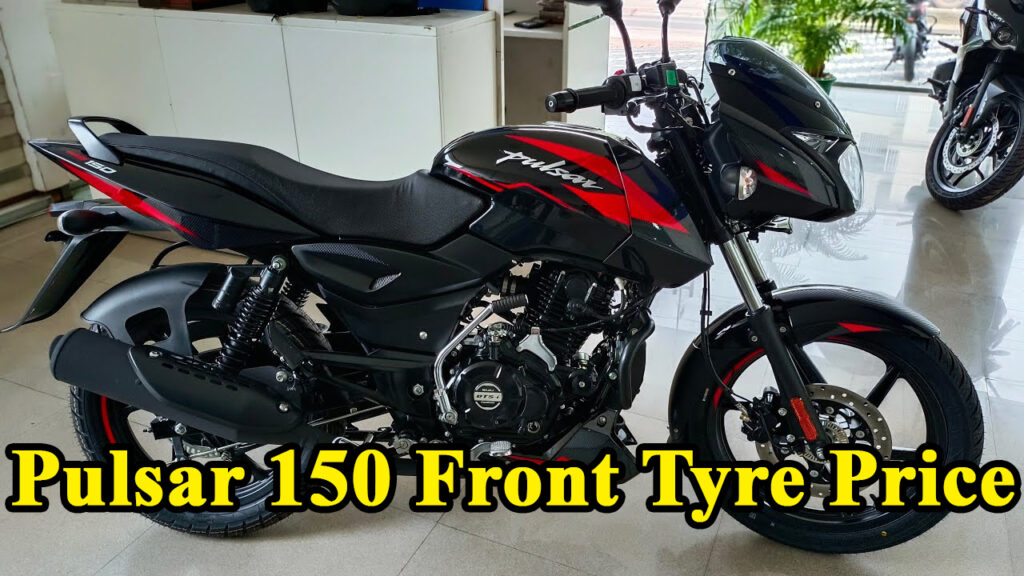For many, a motorcycle tire is just a round, black piece of rubber. But for an experienced rider, or even a daily commuter navigating India’s diverse road conditions, it’s the critical connection between rider and road. Among the myriad of tire sizes, the 2.75-18 tire holds a special, almost iconic, place in the Indian two-wheeler landscape. It’s the silent workhorse, powering countless commuter motorcycles and scooters that define our daily commute.
This isn’t just a technical specification; it’s a testament to practicality, affordability, and reliability that has served generations of Indian riders. Let’s unroll this topic, from its core meaning to its impact on your daily rides and the environment.
What Does “2.75-18” Actually Mean? Deconstructing the Numbers
Before we hit the road, let’s understand the language of tires. The “2.75-18” designation might seem like a cryptic code, but it’s quite straightforward once you know the basics:
- 2.75: The Width in Inches. This number refers to the nominal width of the tire’s cross-section, measured in inches. So, a 2.75-inch wide tire. This is a relatively narrow tire, which is a key characteristic for the bikes it typically fits.
- 18: The Rim Diameter in Inches. This indicates that the tire is designed to fit an 18-inch diameter wheel rim. This is a very common rim size for commuter motorcycles in India.
Maruti Suzuki Ertiga Tyre Size: The Ultimate Guide You Need
In some cases, you might encounter a metric equivalent like “80/100-18.” While not exactly the same, these are often used interchangeably in the smaller commuter segments. “80” would be the width in millimeters, and “100” would be the aspect ratio (tire height as a percentage of its width). For practical purposes in the 2.75-18 segment, the imperial and metric systems often converge on similar-sized tires.
The Reign of the 2.75-18: Why It’s So Prevalent in India
My earliest memories of riding involve a trusty Hero Honda Splendor, a bike that often came fitted with this very tire size. It was, and still is, a common sight. So, why is the 2.75-18 so popular across India?
- Commuter King: This tire size is the bedrock for a vast majority of entry-level and mid-range commuter motorcycles. Think of bikes like the Hero Splendor, Passion, HF Deluxe, Honda Shine, TVS Star City Plus, Bajaj Platina, and Discover – these are the backbone of personal transport for millions, from daily office commutes to errands in remote villages.
- Fuel Efficiency: The narrower profile of a 2.75-inch tire translates to less rolling resistance compared to wider tires. This directly contributes to better fuel efficiency, a critical factor for price-sensitive Indian consumers. Every extra kilometer per litre counts!
- Maneuverability in Traffic: Indian roads, particularly in urban centers, are often a chaotic dance of vehicles, pedestrians, and sometimes even stray animals. A narrower tire offers superior agility, allowing riders to weave through traffic with greater ease and confidence. This is a huge advantage when you’re trying to get through the notorious jams in cities like Bangalore or Delhi.
- Cost-Effectiveness: Manufacturing narrower tires generally requires less material, which translates to lower production costs and, consequently, a more affordable price for the end-user. For budget-conscious buyers, this is a significant selling point.
- Durability on Diverse Terrains: While not designed for extreme off-roading, the 2.75-18, especially when coupled with a robust tube-type construction, is surprisingly resilient to the varied surfaces encountered in India – from smooth highways to broken village roads and even occasional stretches of gravel.
Leading the Pack: Top 2.75-18 Tire Brands in India
When it comes to two-wheeler tires in India, certain brands have earned the trust of riders over decades. For the 2.75-18 segment, the usual suspects are:
- MRF: A household name, MRF’s Nylogrip series (like the Nylogrip Plus, Zapper) is a staple. Their tires are known for their longevity and decent grip in various conditions. I’ve personally used MRF tires on several bikes and they consistently deliver.
- CEAT: Another strong contender, CEAT offers tires like the Milaze and Gripp series, which are popular for their balance of grip, durability, and value.
- Apollo Tyres: With offerings like the Actigrip and Actizip, Apollo has carved a significant niche, providing good performance, especially for those looking for reliable handling.
- TVS Eurogrip: Gaining popularity, TVS Eurogrip tires often come as OEM (Original Equipment Manufacturer) fitment on many bikes and provide good all-around performance with a focus on grip.
- Ralco: Known for their robust construction and competitive pricing, Ralco tires are a common choice for budget-conscious riders.
- JK Tyre: With models like the Blaze series, JK Tyre offers a range of options that cater to the commuter segment, focusing on mileage and durability.
Maruti Brezza Tyre Size: An Expert’s In-Depth Guide & Buying Tips
The Price Tag: Value for Money on Wheels
One of the most appealing aspects of the 2.75-18 tire is its affordability. In India, you can find a good quality 2.75-18 tire from a reputable brand typically ranging from ₹1,200 to ₹2,000. This price can vary based on:
- Brand: Premium brands might be slightly higher.
- Type (Tube vs. Tubeless): Tubeless tires are generally a bit more expensive but offer puncture resistance benefits.
- Tread Pattern: Different patterns for specific uses (e.g., more aggressive for wet grip) can influence price.
- Seller/Location: Prices can vary slightly between different dealers and regions.
For instance, an MRF Nylogrip Plus 2.75-18 tube-type tire might cost around ₹1,600-₹1,700, while a tubeless variant could be slightly higher. Apollo Actigrip R1 might be in a similar range. These prices represent excellent value, providing safety and performance without breaking the bank.
Keeping Your Wheels Rolling: Essential Maintenance Tips
A tire, no matter how good, needs proper care to perform optimally and last longer. Here are some personal and expert-backed tips for your 2.75-18 tires:
- Maintain Correct Tire Pressure: This is the most crucial factor. Check your tire pressure at least once a week, and always before a long ride, when the tires are “cold” (not ridden for a few hours). Underinflation leads to excessive heat buildup, premature wear (especially on the shoulders), reduced fuel efficiency, and compromised handling. Overinflation reduces the contact patch, leading to a harsher ride, reduced grip, and center tread wear. My mechanic in Pune, a seasoned veteran named “Uncle Sharma,” always says, “Hawa sahi hai toh sab sahi hai!” (If the air is right, everything is right!)
- Expert Opinion: Motorcycle manufacturers provide recommended tire pressures in your owner’s manual. Stick to these values.
- Regular Visual Inspection: Before every ride, take a quick glance at your tires. Look for:
- Punctures: Embedded nails, screws, or sharp objects.
- Cuts/Cracks: Any visible damage to the tread or sidewall.
- Bulges/Blisters: These indicate internal damage and are a severe safety hazard.
- Tread Wear Indicators (TWIs): Small bars molded into the tread grooves. If the tread is worn down to these bars, it’s time for a replacement.
- Cleanliness: Regularly clean your tires to remove dirt, grime, and small stones stuck in the tread. Avoid using harsh chemical cleaners, as they can degrade the rubber over time. A simple soap and water solution is sufficient.
- Smooth Riding Habits: Sudden acceleration, hard braking, and aggressive cornering increase tire wear. Smooth and gradual inputs will extend your tire’s life.
- New Tire Break-in: When you get new tires, ride cautiously for the first 100-150 kilometers. New tires have a release agent on their surface and need some time to “scrub in” and offer full grip. I remember once, right after getting new tires on my old Pulsar, I took a sharp turn too confidently. The slight slip reminded me quickly that new tires need respect!
Real-World Insights: Rider Reviews and Experiences
Based on countless conversations with fellow riders and online forums, the consensus on 2.75-18 tires, especially from leading brands, is generally positive for their intended use:
- Pros:
- Longevity: Many riders report getting good mileage (20,000 km +) from these tires, especially in city and highway commuting.
- Decent Grip: For everyday riding, the grip is more than adequate on dry and moderately wet surfaces.
- Affordability: The cost-effectiveness is frequently highlighted as a major advantage.
- Availability: These tires are readily available at almost any tire shop across India, even in smaller towns.
- Cons:
- Limited High-Performance: They are not designed for aggressive cornering or high-speed stability, nor should they be. If you’re looking for track performance or extreme highway speeds, this isn’t the tire for you.
- Wet Grip (Varies): While generally good, some older tread patterns or budget options might feel less confident in heavy monsoon rains. Modern compounds and tread designs are improving this significantly.
Case Study: The Rural Commuter
Consider the case of Rajesh, a farmer in rural Uttar Pradesh. His 100cc commuter bike, fitted with 2.75-18 tires, is his lifeline. He rides it daily on a mix of rough village roads, muddy tracks during monsoon, and paved district roads. For Rajesh, the tire’s durability, low maintenance, and excellent fuel efficiency are paramount. He relies on local mechanics for quick puncture repairs (given they are often tube-type), and the widespread availability of these tires means he’s never stranded for long. This tire size perfectly caters to his functional and economic needs.
Case Study: The City Delivery Rider
Suresh, a food delivery executive in Delhi, also relies heavily on his 110cc bike, also equipped with 2.75-18 tires. His priority is maneuverability in congested traffic, quick acceleration from stops, and decent braking. While he might occasionally encounter a puncture due to city debris, the quick and affordable repair process keeps him on the move. For Suresh, the agility and cost-effectiveness of this tire are non-negotiable.
Safety First: Important Considerations
While the 2.75-18 tire is robust for its intended purpose, rider safety is paramount.
- Never Overload: Adhere to your motorcycle’s load capacity, specified in the owner’s manual. Overloading puts immense stress on tires, leading to premature wear and potential blowouts.
- Beware of Potholes and Sharp Objects: Our roads, unfortunately, are famous for their craters. While these tires can take a beating, hitting large potholes at speed can damage the rim and cause tire failure. Stay vigilant.
- Match Tire to Rim: Always ensure the tire size matches the rim size. Using a tire that’s too wide or too narrow for the rim can lead to unstable handling and safety issues.
- New Tubes with New Tube-Type Tires: If you’re replacing a tube-type tire, it’s highly recommended to replace the inner tube as well. Old tubes can become stretched and prone to creasing, leading to premature failure in a new tire.
The Bigger Picture: Environmental Responsibility
As responsible citizens, we must consider the environmental impact of our consumption. Motorcycle tires, including the 2.75-18, are not easily biodegradable. India has a growing challenge with waste tire management.
The Central Pollution Control Board (CPCB) in India has implemented the Extended Producer Responsibility (EPR) framework, making tire manufacturers responsible for collecting and properly disposing of waste tires. This is a positive step. When replacing your tires, inquire with your dealer about their disposal practices. Many reputable tire shops will take back old tires for recycling or proper disposal. Unfortunately, illegal pyrolysis plants are still an issue, so supporting registered recyclers is crucial.
Beyond the Numbers: The Human Element
For me, the 2.75-18 tire isn’t just about technical specs; it’s intertwined with memories. It’s the tire that carried me through my college days on a humble commuter, navigating narrow lanes and crowded markets. It’s the tire that has supported countless families, enabling daily commutes for work, dropping kids off at school, and carrying essential goods. It represents reliability, accessibility, and the spirit of personal mobility in India.
When you see a 2.75-18 tire, you’re not just looking at rubber and steel; you’re looking at a component that facilitates dreams, livelihoods, and the daily rhythm of life for millions. It’s a testament to engineering that balances performance, cost, and durability for the real-world conditions faced by the average Indian rider.
Conclusion: A Small Tire, A Big Impact
The 2.75-18 tire is far more than just a component; it’s a silent enabler of mobility and progress on Indian roads. Its widespread adoption is a testament to its practical advantages: fuel efficiency, maneuverability, cost-effectiveness, and surprising durability. While it may not boast the flashy features of high-performance tires, it consistently delivers on its promise for the everyday rider.
By understanding its nuances, choosing reputable brands, and diligently maintaining it, you ensure not only a safer and more economical ride but also contribute to the longevity of this essential part of India’s automotive landscape. So, the next time you see a 2.75-18 tire, give it a nod – it’s truly an unsung hero of our journeys.
Frequently Asked Questions (FAQ) about the 2.75-18 Tire
Q1: Can I upgrade my 2.75-18 tire to a wider tire, like a 3.00-18?A1: Often, yes. A 3.00-18 is a common upgrade for bikes that originally came with 2.75-18 tires. This generally offers slightly better grip and a more planted feel. However, it’s crucial to check if your bike’s swingarm and fender have enough clearance to accommodate the wider tire. A local mechanic can quickly assess this for you. While it might slightly impact fuel efficiency due to increased rolling resistance, the difference is usually negligible for casual riding.
Q2: What is the average lifespan of a 2.75-18 tire?A2: The lifespan can vary greatly depending on riding style, road conditions, tire brand, and maintenance. However, with proper care and maintenance (especially correct tire pressure), you can expect a 2.75-18 tire to last anywhere from 20,000 to 30,000 kilometers for the rear tire, and often more for the front tire (as it experiences less wear).
Q3: Are 2.75-18 tires available in tubeless variants?A3: Yes, absolutely! While traditionally many bikes came with tube-type 2.75-18 tires, most leading manufacturers now offer tubeless options in this size. Tubeless tires offer the significant advantage of slow air loss in case of a puncture, giving you time to reach a repair shop, and are generally easier to repair.
Q4: How do I know if my tire needs replacing?A4: Look for the following signs: * Tread Wear Indicators (TWIs): These are small raised bars within the main tread grooves. If the tread is worn down to the level of these indicators, the tire needs immediate replacement. * Cracks or Cuts: Any visible cracks on the sidewall or deep cuts on the tread. * Bulges or Blisters: These indicate internal damage and are a critical safety hazard. Replace the tire immediately. * Frequent Punctures: If you’re experiencing repeated punctures, it might be a sign of a worn-out tire carcass.
Q5: What’s the difference between a front and rear 2.75-18 tire?A5: While the size designation might be the same, tires are often designed specifically for front or rear wheel applications. * Front tires typically have longitudinal grooves for better water channeling and steering stability. * Rear tires have a more blocky or aggressive tread pattern to provide maximum traction for acceleration and braking. Always ensure you are buying the correct tire for its intended wheel position.




